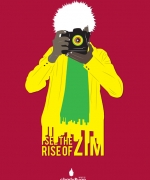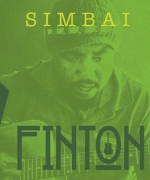Zimbabwe in Cultural Transition
The history of Zimbabwean visual culture is a complex journey from ancestral the acres to morden day and futuristic times. This history is punctuated by dramatic transformations and redefinition of values. The visual culture of this nation is highly dependent on the myths, legends and beliefs that govern the culture of the people of Zimbabwe.
At the centreof this culture there is the Land. A predominantly vast expanse of virgin and exploited acres. Similar to most African cultures the land in Zimbabwe’s ancestral ideology is considered a sacred and non commercial communal entity. The land is the Terrestrial link that connects the ancestral, present and future generations. On it the ancestors were buried, the present generation lives upon it and the future generations will be born to play and thrive upon it.
This entity was the main reason for the “Chimurenga” the liberation struggle against colonial powers. When a child is born tradition requires that part of their umbilical cord which falls of must be interred into the earth to connect the child to their ancestors. The symbolism of this ritual lies in the biological parallel in which the umbilical cord is vital connection between the child and its mother in the same spiritual way the interring of the same into the earth provides that ancestral link. This ritual is called “Kuchera Rukuvhute”
The Pan-African ideology in connection to the land clearly illustrates the energy that is directly connected to the land. The Earth colours (Browns, Reds and other terrestrial darks) are in proximity with the land and they carry and energy that is earth like in very cultural and natural ways. The land connection is so major and can be evident in the proverbs and labels common among the Shona people.
“Chinoziva ivhu kuti mwana wembeva anorwara”
Is a Shona proverb translated: It is the soil/earth that knows when the offspring of the mice is sick “This is a proverb that illustrates the intimacy and proximity between the land and life? In This proverb the land is alive and in conscious relationship with life. This is very common in ancient Shona anthropology as is revealed by Shona folklore.
“Mwana wevhu”
Is a very revolutionary and nationalistic label directly translated “son of the Soil”. This label is an honorary label that can be used to refer to any indigenous Zimbabwean person. It was commonly used in all the three phases of the Chimurenga flourished in the third chimurenga which was the last repossession of the land from the minority settler population.
The Zimbabwean life cycle is divided into three interrelated dimensions, The Ancestral, The present and The Posteral. These dimensions exist in proximity to one another. The energy of objects and colours takes different form in each dimension. There is a strong link between colour
Ancestral talk
Ancestral talk is an analytical technique that looks at anthropological issues in a historically three dimensional way. This idea was conceived in 2008 by students and lecturers the school of thought that exists at Harare Polytechnic.
This idea was inspired by an article by Ayi kwei Armah (a Ghanaian author), the article was entitled “Who are the true Egyptians”, The New African Issue( April 2006)
In this analytical Technique we look at present day (here and now)issues considering their ancestral significance, their Posteral (futuristic) significance as well as their present day status and then look for ways to resolve conflict that might have developed with the passage of time.
In African life cycles (Zimbabwean in particular) the institution of ancestors is a very important one; most cultures interact with their ancestors everyday through certain values and beliefs that were considered as important by their ancestral institution. Most decisions are made after considering their ancestral and the futuristic importance.
Follow the rest of the article below
- A Thousand Icons on a cultural desktop
- Innate, Implied and Imparted Energy
- The energy of objects illustrated in Shona Rituals
- Zimbabwe in Cultural Transition





